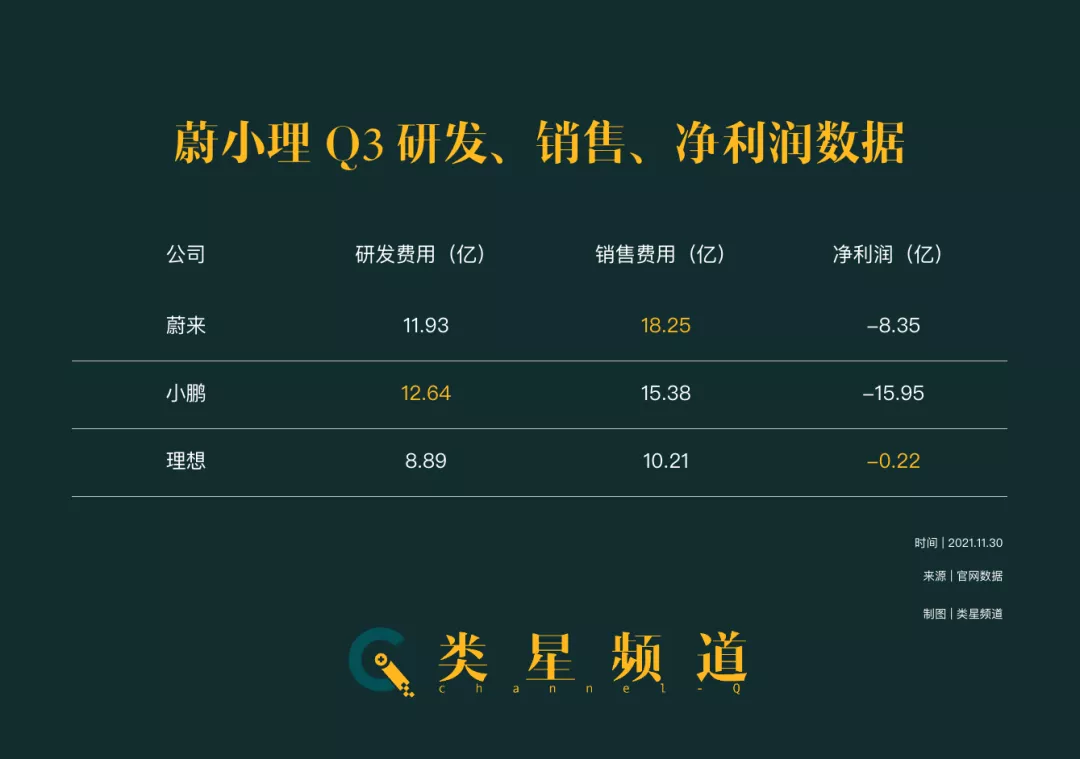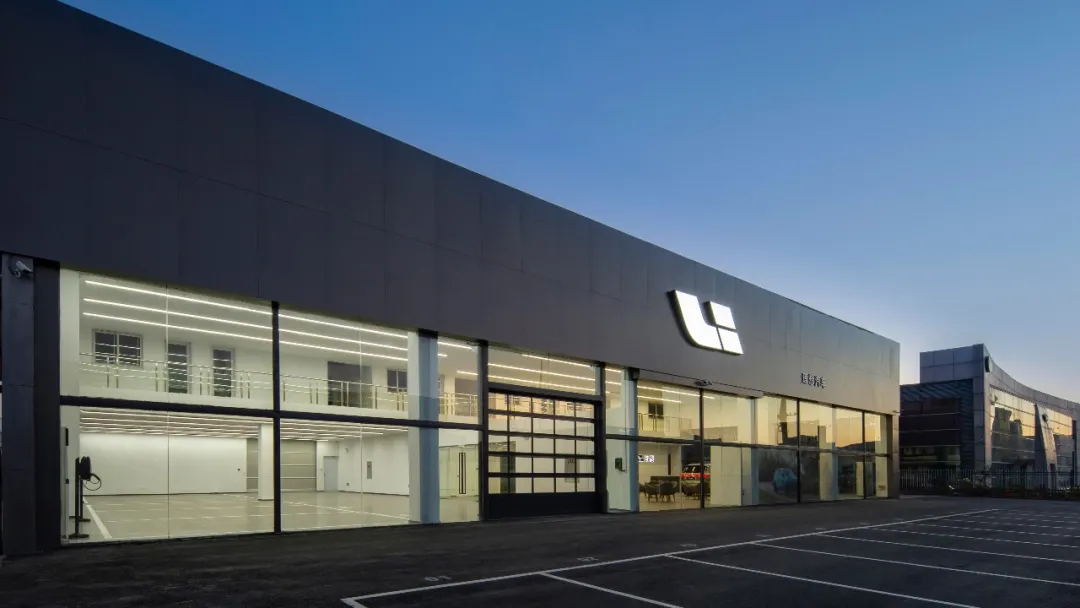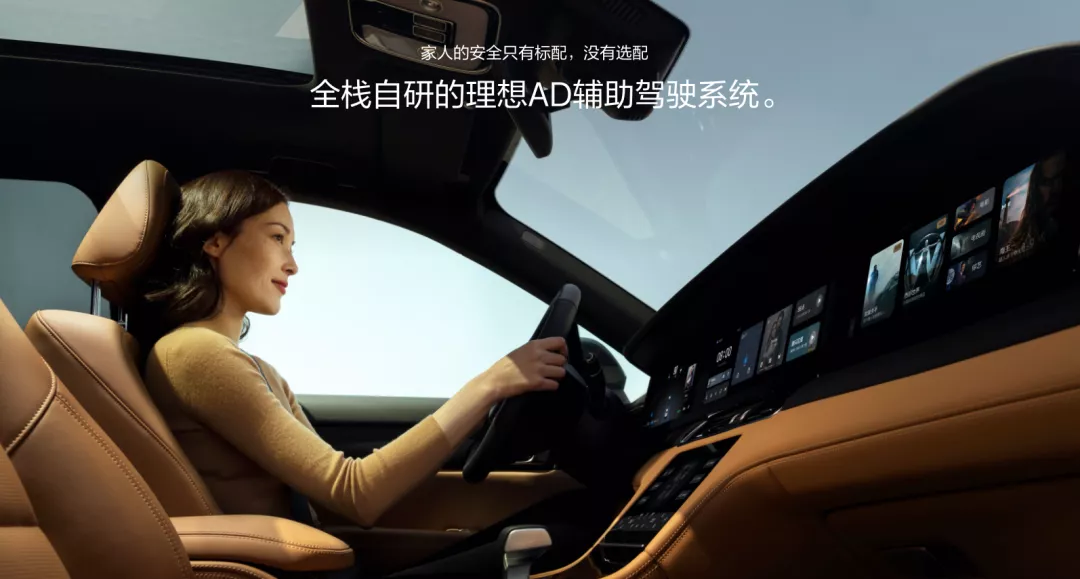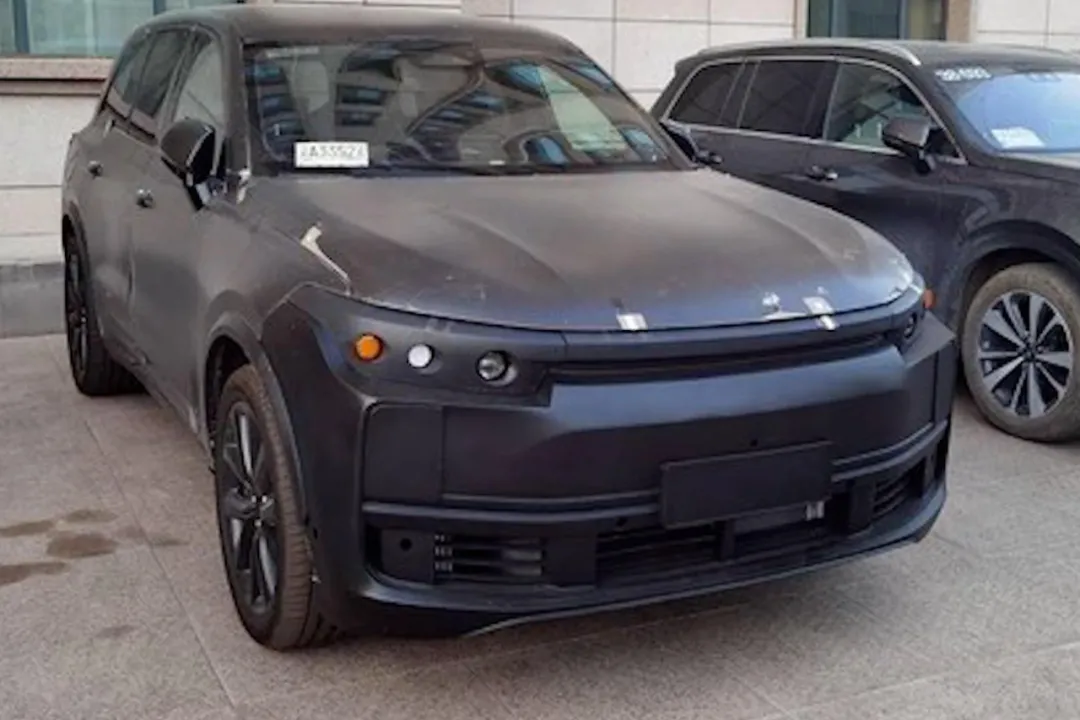Quarterly Report of Li Auto in Q3 2021
On November 29th, Li Auto announced its Q3 2021 financial report, revealing that it had delivered a total of 25,116 vehicles during the quarter, with automotive sales revenue of 7.39 billion cny. The gross profit margin of a single vehicle has reached 21.1%, which is more than 20% compared with the previous quarter, indicating an increase of 2.4%. After completing its dual listing in Hong Kong in August, the company’s cash reserve reached 48.83 billion cny, and more interestingly, Li Auto only lost 22 million cny in Q3.
During the conference call for the financial results, Li Auto also disclosed a considerable amount of relevant information on the delivery time of the X01, the release of NOA, production capacity, and long-term planning, etc.
Financial Data
The most eye-catching data of the financial report is the gross profit margin of Li Auto in Q3 2021, which reached 23.3%. Compared to the previous quarter (18.9%), the gross profit margin has increased by 4.4%. A single vehicle’s gross profit margin has reached 21.1%, which is undoubtedly a healthy indicator for a car manufacturer with a gross profit margin of over 20%.
The increase in the gross profit margin primarily comes from the price increase of the 2021 version of the Li ONE, as well as some cost-cutting measures taken in the supply chain. Besides automotive sales, Li Auto also gained revenue of approximately 200 million cny from carbon credit sales in Q3, which contributed to the increase in the overall gross profit margin.
Regarding the gross profit margin, Li Auto’s CEO, Li Xiang, supplemented during the financial report conference call, that Li Auto would persevere in maintaining a relatively healthy gross profit margin in the long term. The core reason for carefully controlling the gross margin is to invest more in R&D expenses. Li Xiang stated, “If we can maintain a very healthy gross profit margin, we can ensure that Li Auto can sustainably and continuously invest in R&D expenses of more than 10%.”
The importance of R&D expenses is self-evident for a new energy vehicle company. An R&D expense of more than 10% is quite impressive, and as the company grows, the R&D expense will continue to increase, and it will be an enormous challenge to maintain the current level.
However, for now, Li Auto’s investment in R&D is the lowest among its competitors, as many new models have been released, occupying a substantial amount of R&D expenses. In Q3, the R&D expenses of Li Auto were 888.5 million cny, an increase of 36% compared to the previous quarter, mainly due to an increase in R&D personnel and the R&D activities of new products.Before 2023, IDEA’s SUV models will dominate and have fewer quantities compared to NIO and XPENG, which is also normal considering the lower R&D investment.

From the figure, we can see that IDEA’s sales cost is the lowest among NIO and XPENG. With a Q3 sales and general administrative cost of 1.02 billion, a QoQ growth of 22.3%, IDEA focuses its funds on expanding its offline stores. As of October 31, IDEA has 162 retail centers covering 86 cities, operating 223 after-sales repair centers and authorized body repair centers in 165 cities.

Apart from offline expansion, another sales cost item is marketing activities. However, with the current average waiting time for an IDEA ONE order being 6-8 weeks, it is not surprising that the marketing efforts have slowed down. After all, experiencing a significant number of orders but unable to deliver them in time makes it difficult to maintain high customer satisfaction. Shen Yanan also stated in the financial report that IDEA plans to keep its sales cost under 10%.
With cost control and rising sales, IDEA has the opportunity to become the earliest profitable new force enterprise. As seen in the figure, IDEA’s net loss in Q3 was only 22 million. In the next financial report, perhaps in the next quarter, we might see IDEA starting to earn a profit after only six years of operating the business.
How is the progress?
IDEA ONE is undoubtedly a popular model, with sales exceeding 100,000 units in just under two years. In Q3 financial report guidance, the target delivery for Q4 is estimated to be 30,000 to 32,000 units. Let’s do the math: IDEA delivered 7,649 units in October, which means that they need to deliver at least 22,531 units in November and December to meet their expected target, an average of more than 11,000 units per month.
During the financial report conference call, IDEA’s CEO, Shen Yanan, predicted that the deliveries in November would exceed 10,000 units. This indicates that IDEA has eased its chip shortage problem, as it delivered just over 7,000 units in October, mainly because of the chip problem, and even started the delivery mode of fitting radar later.
Although the delivery volume is not high, IDEA’s order record reached 14,500 units in October, breaking the previous record. Therefore, when the chip shortage is relieved and there is sufficient demand, the performance of IDEA Changzhou factory will be the next thing to watch.
During the Q&A session of the financial report conference, Shen Yanan stated that the current factory capacity can basically meet the demand of 14,000 vehicles per month. If the chip shortage can be resolved, the factory’s capacity is expected to climb to 15,000 vehicles per month after the Spring Festival. However, there is still a supply problem with Bosch ESP parts, and IDEAL is actively working with Bosch to resolve this issue.
In the longer-term production capacity planning, IDEAL’s Beijing new factory officially started construction in October this year and is expected to be put into operation in 2023. By the end of 2023, IDEAL expects annual production capacity to reach 500,000 vehicles. If two-shift production is adopted, the total production capacity will reach 700,000 vehicles per year.
In addition, IDEAL has a big event to attend to in December this year, which is the release of NOA. IDEAL’s NOA is the same as XPeng NGP and NIO NOP, which are all high-speed/highway navigation assisted driving features. The biggest difference is that IDEAL NOA is standard on all 2021 IDEAL ONE models, and IDEAL plans to push NOA functionality to 60,000 2021 IDEAL ONE models before the end of this year. This will be the largest NOA push in China.

The standard NOA also gives IDEAL an advantage in the evolution of intelligent driving, after all, paying for intelligent driving is still the choice of a few people at this stage. A large fleet of vehicles will provide IDEAL with massive data support.
As early as the Hong Kong Stock Exchange prospectus, IDEAL mentioned the “shadow mode”, which uploads driving scenes and corresponding decisions to its self-developed data platform to quickly optimize autonomous driving algorithms and improve user experience. We look forward to IDEAL’s performance in NOA and the speed of later optimization.
As for new car models, Shen Yanan revealed at this financial report conference that IDEAL X01 will be launched in the second quarter of 2022 and deliveries will begin in the third quarter. Perhaps we will see it at the Beijing Auto Show next year.
 In the 4 vehicle models that are expected to launch in 2023, 2 will be pure electric models, with the first one scheduled for release in the second half of 2023. Ideal has completed testing on the 4C battery pack, which proves that it only takes 10 minutes to charge and support a range of 400 km. “4C” refers to the battery charge and discharge rate, which can be calculated by dividing the power by the battery capacity. For example, a 100 kWh battery has a maximum charging power of 100 kW, giving it a maximum charging multiplier rate of 1C. Additionally, the air conditioning system of the new models has been improved.
In the 4 vehicle models that are expected to launch in 2023, 2 will be pure electric models, with the first one scheduled for release in the second half of 2023. Ideal has completed testing on the 4C battery pack, which proves that it only takes 10 minutes to charge and support a range of 400 km. “4C” refers to the battery charge and discharge rate, which can be calculated by dividing the power by the battery capacity. For example, a 100 kWh battery has a maximum charging power of 100 kW, giving it a maximum charging multiplier rate of 1C. Additionally, the air conditioning system of the new models has been improved.
Expanding further has become a major goal for Ideal’s plan next year. During the financial report meeting, Shen Yanan indicated that the number of Ideal retail stores will reach 200 in approximately 100 cities by the end of this year, and that the plan for next year is to double the number of retail stores, to 400. To compare, in May, Ideal had only 83 retail stores, which doubled in just half a year.
Ideal continues to accelerate its sales, offline expansion, and technological research and development, and is still making progress in the new energy vehicle market.
At the end, Ideal has established a firm position in the new energy vehicle market with just one car model, the Ideal ONE, which has become a hot-selling model. Achieving profitability may be a new starting point for Ideal. X01 will be launched in the second quarter of next year, and 4 car models will be released in 2023. The development of the pure electric platform and the infrastructure construction for energy supplementation will be the great challenges that Ideal will face next. Can Ideal continue to bring us hot-selling models? Let’s wait and see…
This article is a translation by ChatGPT of a Chinese report from 42HOW. If you have any questions about it, please email bd@42how.com.